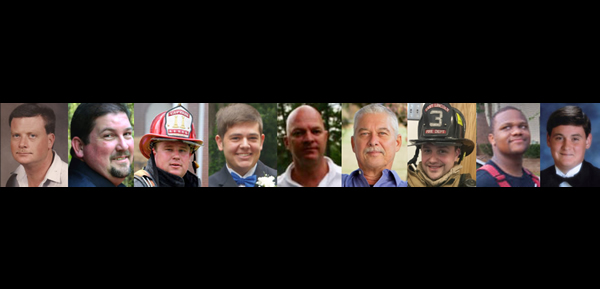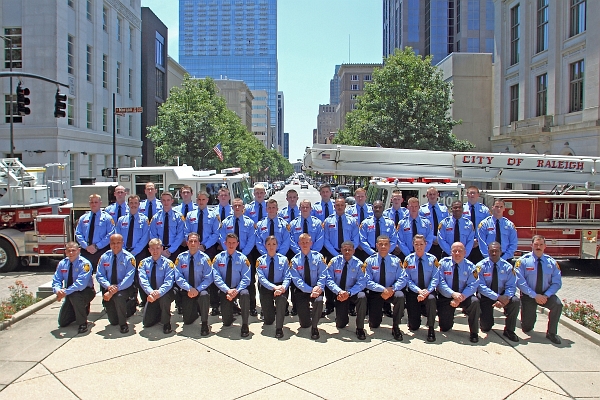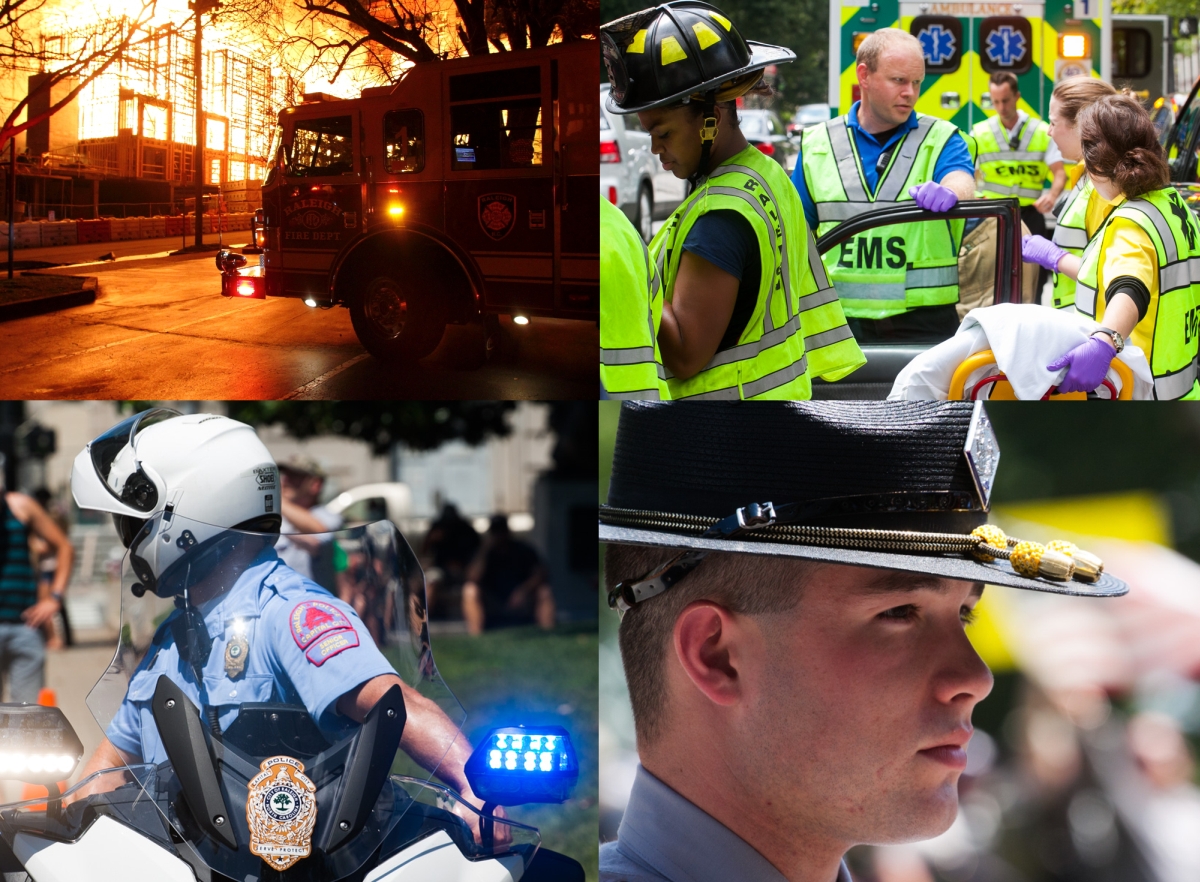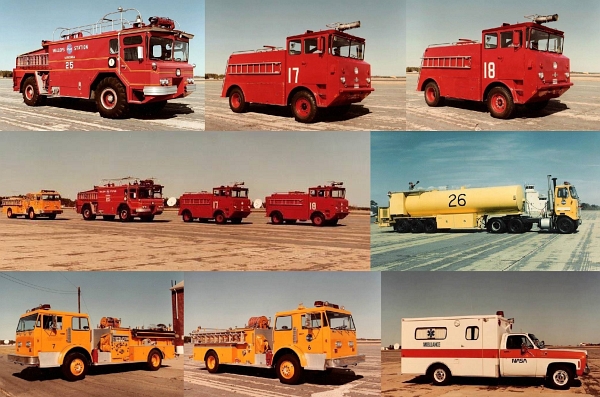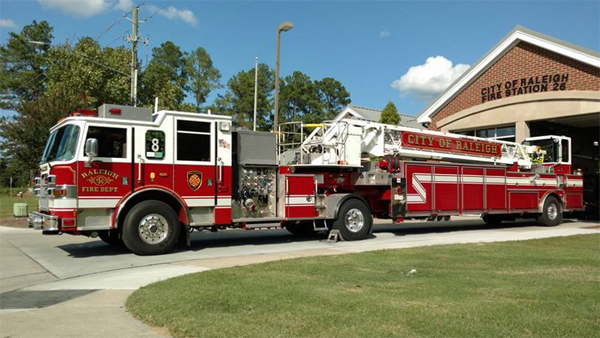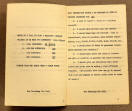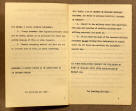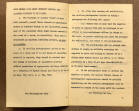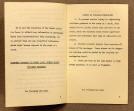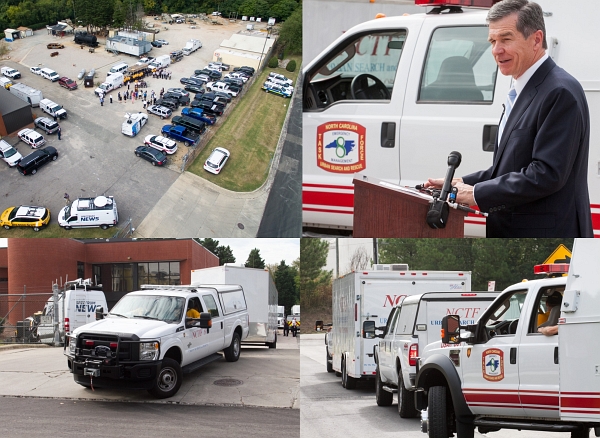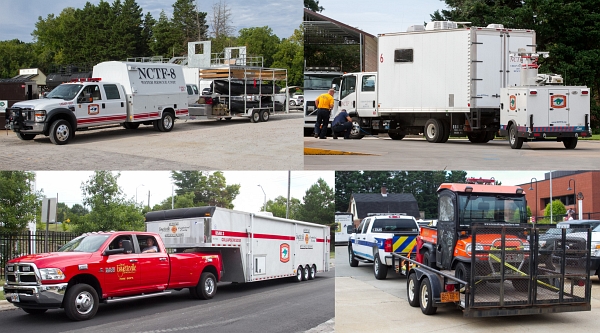Press release. The 36th Annual National Fallen Firefighters Memorial Service will honor nine firefighters who died in the line of duty from North Carolina. They are among the 75 firefighters who died in 2016 and 20 firefighters who died in previous years who will be remembered at the official national service at the National Fire Academy in Emmitsburg, MD, on Sunday, October 8, 2017.
Click to enlarge:
- David Kevin Britt
Fire Chief, age 54
Severn Volunteer Fire Department
Died June 18, 2016, after suffering a heart attack at his home several hours after responding to a motor vehicle accident.
- John M. Davis, Jr.
Firefighter, age 45
Kenly Fire Department
Died May 7, 2016, after experiencing chest pains within 24-hours from assisting with a patient extrication at the scene of a motor vehicle accident.
- Bradley Steven Long
Captain, age 28
Sherrills Ford-Terrill Fire and Rescue
Died June 6, 2016, while diving at Lake Norman to recover the body of a man who drowned the day before.
- Richard Michael Sheltra
Firefighter, age 20
Pineville-Morrow Volunteer Fire Department and Rescue
Died April 30, 2016, during a lightning-sparked commercial structure fire at a strip mall.
- Prentice Jay Tyndall
Firefighter, age 45
Hugo Volunteer Fire & Rescue
Died May 12, 2016, after falling ill following his response to a mutual aid structure fire on May 8, 2016.
- James Ronald Varnell
Firefighter, age 53
Bakertown Volunteer Fire Department
Died February 2, 2016, after becoming ill immediately following his participation in department training.
- Joshua Lee Warren
Firefighter, age 33
Alexis Fire Department
Died June 16, 2016, after participating in department-mandated physical fitness training.
- Joshua M. Woods
Firefighter, age 24
Siler City Fire Department
Died January 12, 2016, from injuries sustained in a crash while responding to a call for a reported cardiac arrest.
- Tommy Wright
Firefighter, age 20
Blowing Rock Fire and Rescue
Died March 21, 2010, after a car accident on the way back from training.
Their names will be added to the National Fallen Firefighters Memorial on the Academy grounds. The national tribute is sponsored by the National Fallen Firefighters Foundation (NFFF) and the Department of Homeland Security’s U.S. Fire Administration.
Thousands are expected to attend the service, including families and friends of the fallen firefighters, members of Congress, Administration officials and other dignitaries.
Families will receive flags flown over the U. S. Capitol and the National Memorial. Members of the fire service, honor guard units and pipe and drum units from across the country will participate in this national tribute. For a complete list of fallen firefighters being honored and live streaming of the event, visit weekend.firehero.org.
